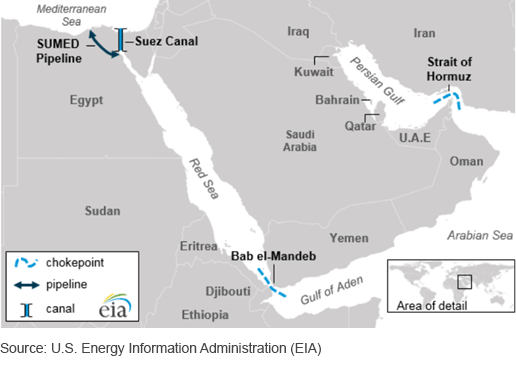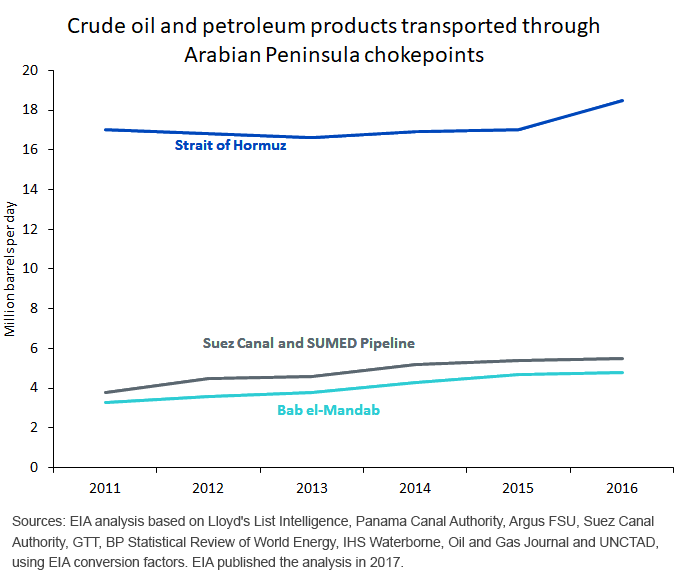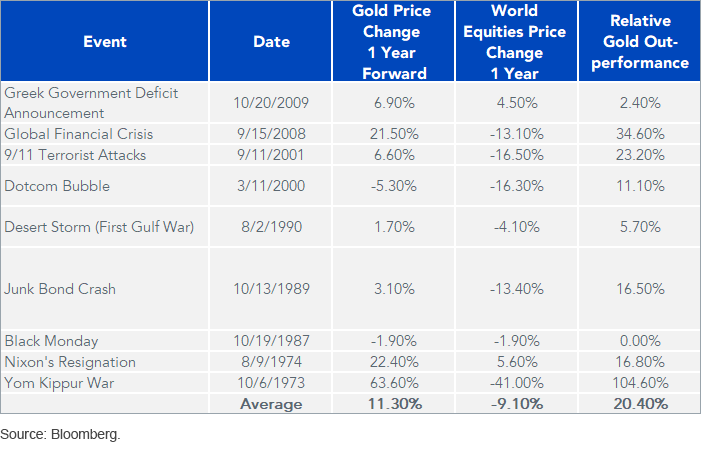Don’t Snooze on Hormuz


40 Years of Fraught U.S.-Iran Tension in the Persian Gulf Plays On
With Iran backed into a corner, increased tension between the regime and the White House has resurrected talk of a closing of the Strait of Hormuz, the critical waterway by which the bulk of Middle Eastern oil must travel. Given the apparent torpedo attacks on a couple of tankers near the Strait on June 13, it may be time to respect unappreciated geopolitical risk. These positions stand to benefit:
- Long Brent Crude oil
- Long gold
- Short euro against the U.S. dollar
Before moving on, we must acknowledge our cognitive dissonance in identifying an environment that is bullish for oil and gold while at the same time being constructive on the U.S. dollar in a major pair (because commodities tend to move in the opposite direction of the greenback). The reason for our jaundiced view on the euro specifically is the Continent’s fragility regarding the politics of consumer fuel costs. This stems from the risk of France’s “yellow vest” protest movement surprising the market with newfound strength.
What Is Causing the Saber-Rattling?
Though Iran is facing sanctions from the U.S., many oil-consuming nations were offered waivers last November to continue purchasing from the regime. Those waivers expired in May, leaving Iran with a loss of market share for its 1.3 million barrels per day of oil exports.
Now the regime is trying to wriggle out of the its nuclear accord with the European Union, as it doesn’t feel like it’s getting any upside after the U.S. withdrew from it last May.
Hormuz
The Strait of Hormuz is the world’s most important chokepoint, carrying 30% of global seaborne-traded crude oil and other liquids. It is also the avenue for all of Qatar’s liquefied natural gas exports, which are roughly 30% of the global trade in that commodity.
Figure 1: Map of Key Straits in the Middle East

The EIA anticipates that OPEC’s total output in 2020 will be 29.8 million barrels per day, of which 18 million barrels will flow through Hormuz. The other two chokepoints pale in comparison (figure 2).
Figure 2: Middle East Oil Chokepoints

Asset Impacts
It is tempting to look to history to see what happened in similar events in the past, but there are limitations, as no two conflicts are the same. Let’s start with oil and then we will move on to gold.
Oil
While the Gulf Wars are useful reference points for oil shocks from Middle East conflict, some other periods have a mixed track record. For example, 1987–1988 was a period of elevated tension in the region, yet the era is not really known for rising oil prices.
Figure 3: Persian Gulf Conflicts, 1987–1988

For the oil bears, there are some parallels to the 1980s—demand for “greener” autos today, Saudi Arabia’s near-10 million barrels of daily production and off-the-charts U.S. shale supply come to mind. But much of this is moot if Hormuz’s flow is called into doubt. For context, consider that Venezuela’s oil production fell from 2.4 million barrels per day in 2016 to about 800,000 barrels currently, a decline of 1.6 million barrels per day. There is about 11 times that much crude and equivalents flowing through Hormuz.
Gold
Geopolitical shocks tend to benefit gold prices, as shown in figure 4.
Figure 4: Geopolitical Shocks

Gold saw some of its best outperformance in the 1970s, but extrapolating those experiences forward is problematic. The demise of the Bretton Woods monetary system fundamentally changed the price of gold in that era. President Ford’s 1974 signing of an act that permitted U.S. citizens to own and deal in gold reversed four decades of official policy that originated with President Roosevelt’s 1933 confiscation decree. With the world’s largest economy able to invest again, the mid-1970s saw a structural change for the metal’s demand dynamic. As investors tried to access it for the first time in four decades, gold’s price rose substantially more than we can extrapolate to any current situation.
Nevertheless, the Yom Kippur War and the first Gulf War indicate that gold prices can stand out when the Middle East heats up. Additionally, even if threats of Hormuz closure become tamer, the metal could begin to play off other geopolitical tensions. The one at the top of our list is the possibility of a Sino-U.S. cold war.
Short Euro Against U.S. Dollar
The populist right in Europe could find strength in disgruntlement from rising fuel prices. The gilets jaunes movement in France is an illustration of what could happen when rising fuel prices hit people who were angry to begin with. Although many believe that political movement is broadly on the wane, higher diesel costs could bring it back with a vengeance. The U.S. is less sensitive to political shock from high oil prices because it is producing so much oil itself. That is in stark contrast to the U.S. of old. For this reason, the euro looks vulnerable, a rare exception to the “rule” that oil and gold bullishness tend to go hand-in-hand with U.S. dollar bearishness.


